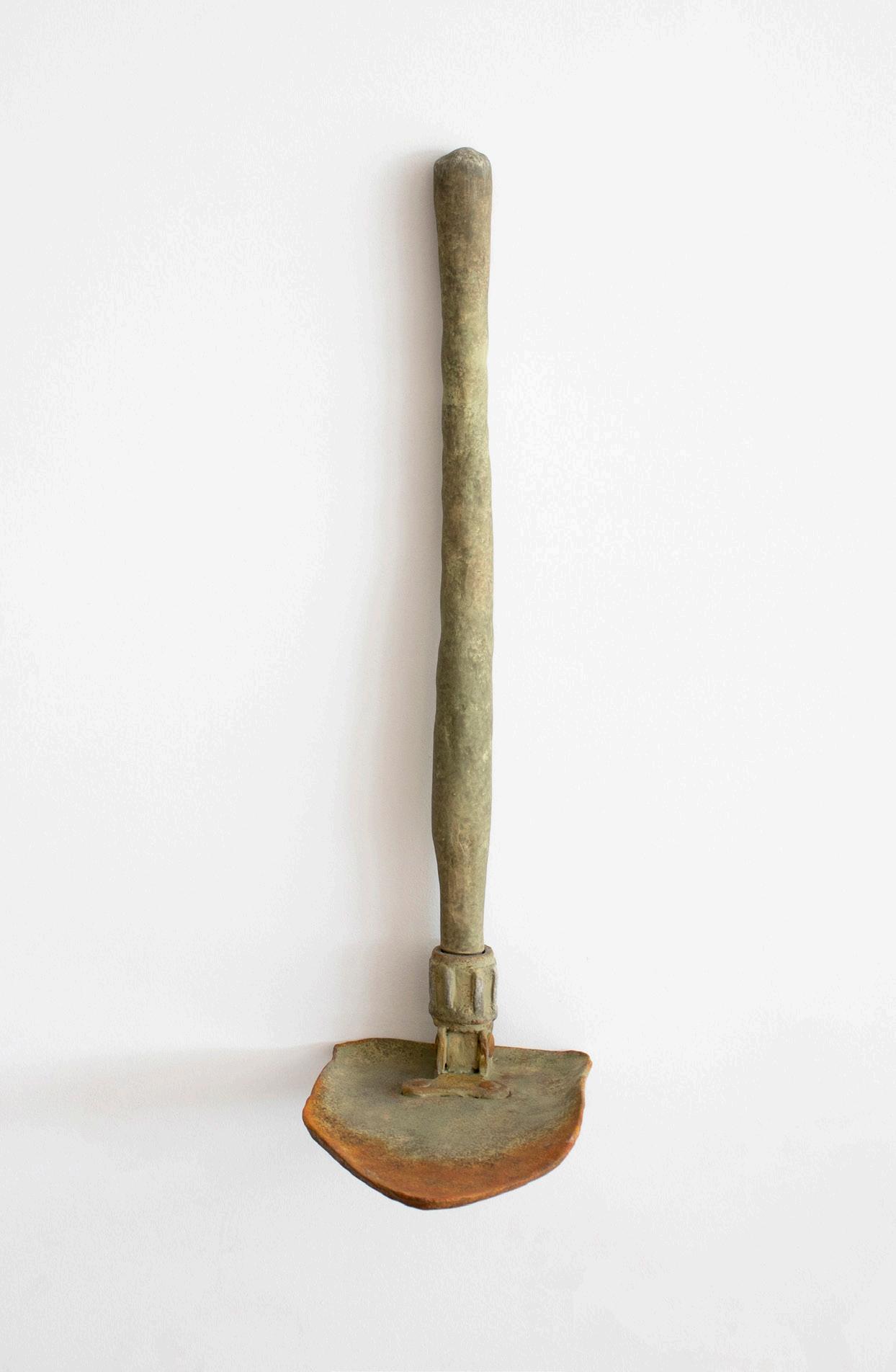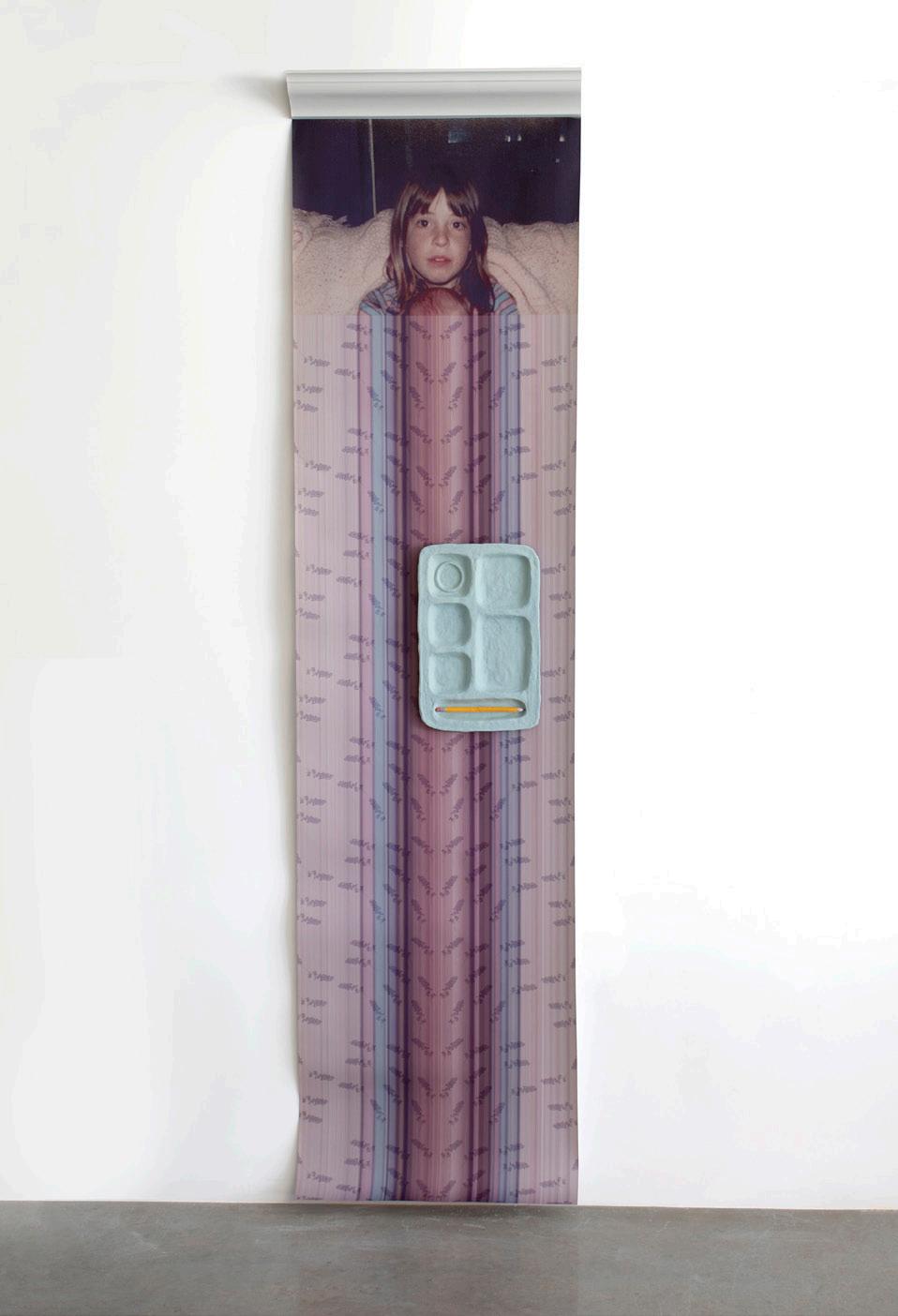
5 minute read
Joseph Madrigal
from Agora Fall 2021
In Memory of a Dream: A Pattern Language
by JOSEPH MADRIGAL, Associate Professor of Art
My sabbatical proposal preceded the COVID-19 pandemic. And as the early part of the pandemic unfolded, it was clear that the key components of my initial sabbatical proposal were impossible to carry through. Source material collection and research was to coincide and rely on a planned trip to the area of California where I was born and spent the first seven years of my life; an endless summer. The intention of this trip was to investigate many geological and historical sites there and along the contiguous landscape between Decorah and central coastal California. I am particularly invested in the overlay of culture and civilization and all the idiosyncrasies therein from pre-Columbian NativeAmerican history, Spanish (Mexican) occupation of California, Portuguese diaspora, and modern American society. This happens to be my particular mix of genetic and cultural heritage and continues to inform how I situate my connection to past, present, and future as a non-linear field or wave-function collapsing place and time. Art creates stories or places to contemplate and engage the total place of human and non-human experience. Not just the beautiful and ideal but the ugly and broken places of humanity as well. Although I was not able to accomplish plans as originally choreographed, I approached my sabbatical research and scholarship with the spirit of these goals and ideas in mind.
of Place and Time
I began digitally scanning old family photos with particular attention to the time period just before my birth and through my first seven years in Watsonville, California on San Juan Road and the greater Bay Area. If I could not travel externally, I would move inward and explore my relationship to my past. This process also helped to shape my shifting perspectives on concepts of "space/time" and re-placing them with a developing appreciation of "place/time." Space is cold and empty; theoretical. Place is warm, populated, and storied; experiential. Family photographs emerge as useful means to play through these ideas. Snapshots of particular times in the places my family occupied in the home, out in the landscape, and all the interstitial places thereof like gardens, patios, driveways, and decks.
#2 (american standard)
archival pigmented inkjet on washi paper, crown molding, hand-built ceramic with tinted porcelain and underglaze surfacing 96 x 24 x 4 inches Joseph Madrigal
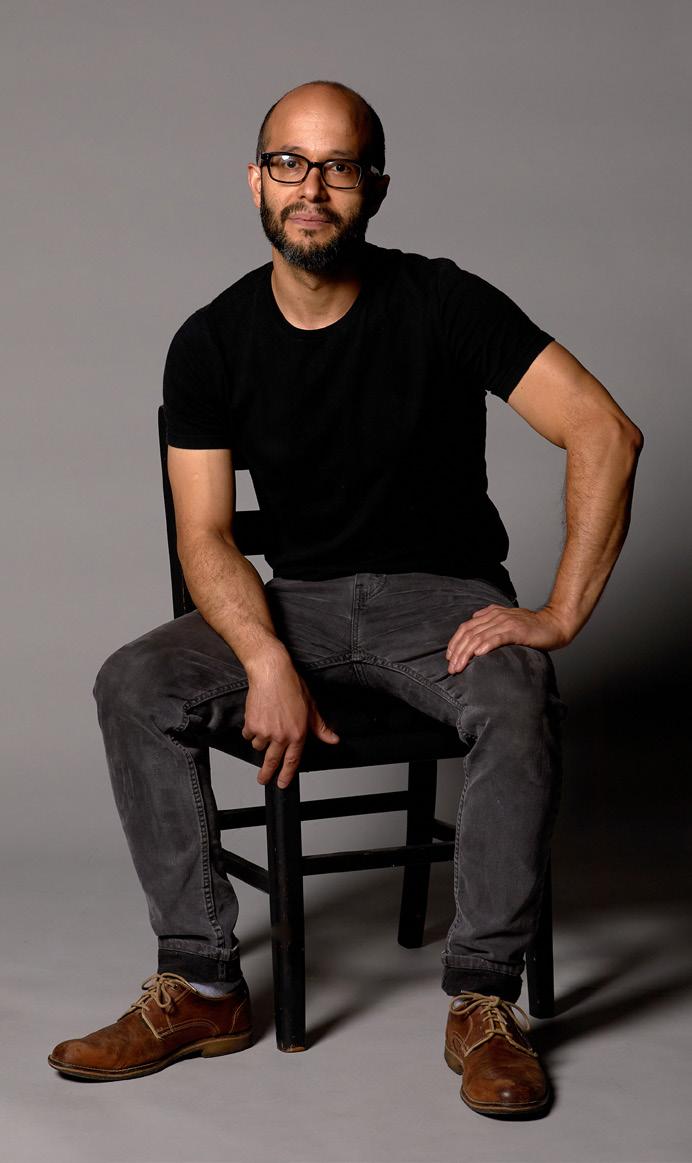
to Wonder and Wander
I went on daily walks around Decorah with special attention paid to our "natural" prairie and woodland places. These walks became purposeful in the gathering and collection of flowers. These flowers were systematically pressed, dried, and then digitally scanned. The
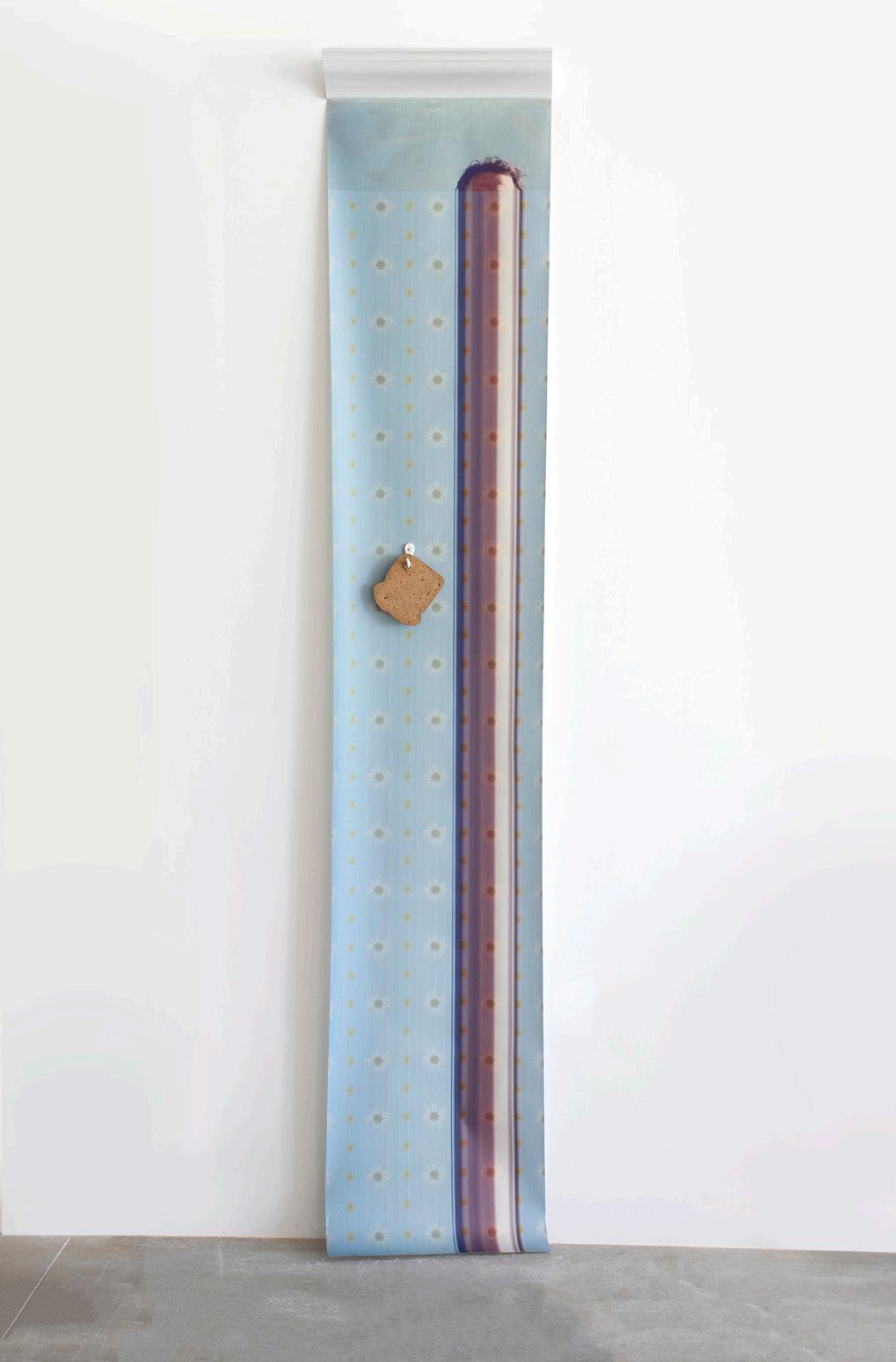
of wheat and chaff
archival pigmented inkjet on washi paper, crown molding, hand-built ceramic with underglaze surfacing hung on glazed ceramic hook
96 x 30 x 8 inches
vol. 27, no. 2 - february, 1980 (wookin' pa nub)
archival pigmented inkjet on washi paper, crown molding, slipdipped porcelain burnout with underglaze surfacing on glazed ceramic shelf 96 x 22 x 5 inches
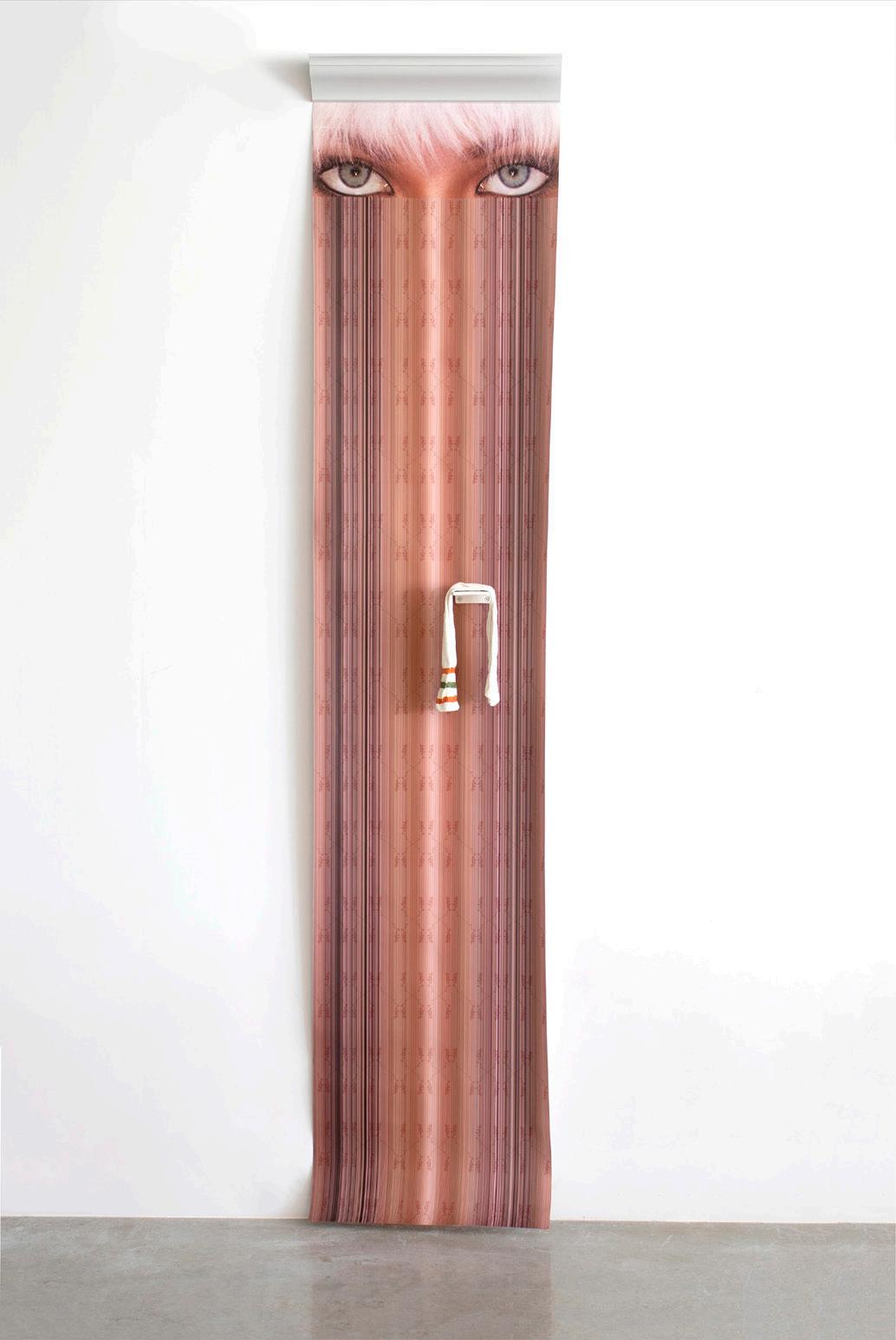
digitized flowers became the literal wallpaper patterns in the exhibition work. And as serendipity would unfold, some of these files got corrupted which later influenced how I would alter my now-digital family photos.
of Memory and Recapitulation
These long walks and the pandemic/ sabbatical paradigm of spending countless hours and days alone was an opportune time to travel inward. I engaged in recapitulation work, an excavation of and sifting through memory and personal story. My memory favors spatial and emotional frameworks. Time collapses in this framework and emotional awareness gets imprinted across many internalized landscapes. My memory favors qualitative information over quanta. I may not remember someone’s name, but I can almost perfectly recall their gait or how they occupy and imprint upon their lived space. My language is a body-language. My memory is a bodymemory.
of Soil and Labor
I collected local soil and started a filtering process. This process is very similar to how natural clays are rendered; a process that is available from my ceramics background. This refined soil was then systematically filtered with varied dry mesh sieves to separate out quantities of soils each with unified mesh sizes 10, 20, 30, 40 of the dried filtered earth.* The equipment and processes involved also mimic gold panning and prospecting, which was a driver in the settlement of the west and bears the name of the football franchise (49ers) of the greater Bay Area where I was born. At that time, I did not have a plan for how I would use this refined material. I just knew that the process had purpose and meaning and was informative about the other ways in which I was working through ideas. Labor is a story of time as experienced through the body.
of Objects: Oneiric and Mnemonic
There are moments where memory and dream overlap which only logic and linear chronology can parse out. To this day, I have a collection of dreams/ memories that are still as yet uncoupled.
I gathered many objects both mundane and specific: chewed bubble gum, rusted nails, bits of fabric and foil, pencils, books, teeth. These objects have various connections and associations to my story in direct, layered and many intentionally unknowable ways. The universality and ubiquity of many of these objects also allow for connections beyond the particularities of my story. The initial intent was to use the objects as they are. I made a late fortuitous decision to render them all in clay to create distance from the real by capturing memory in an object through its literal re-making. Much in the ways we re-member our bodies when we dream.
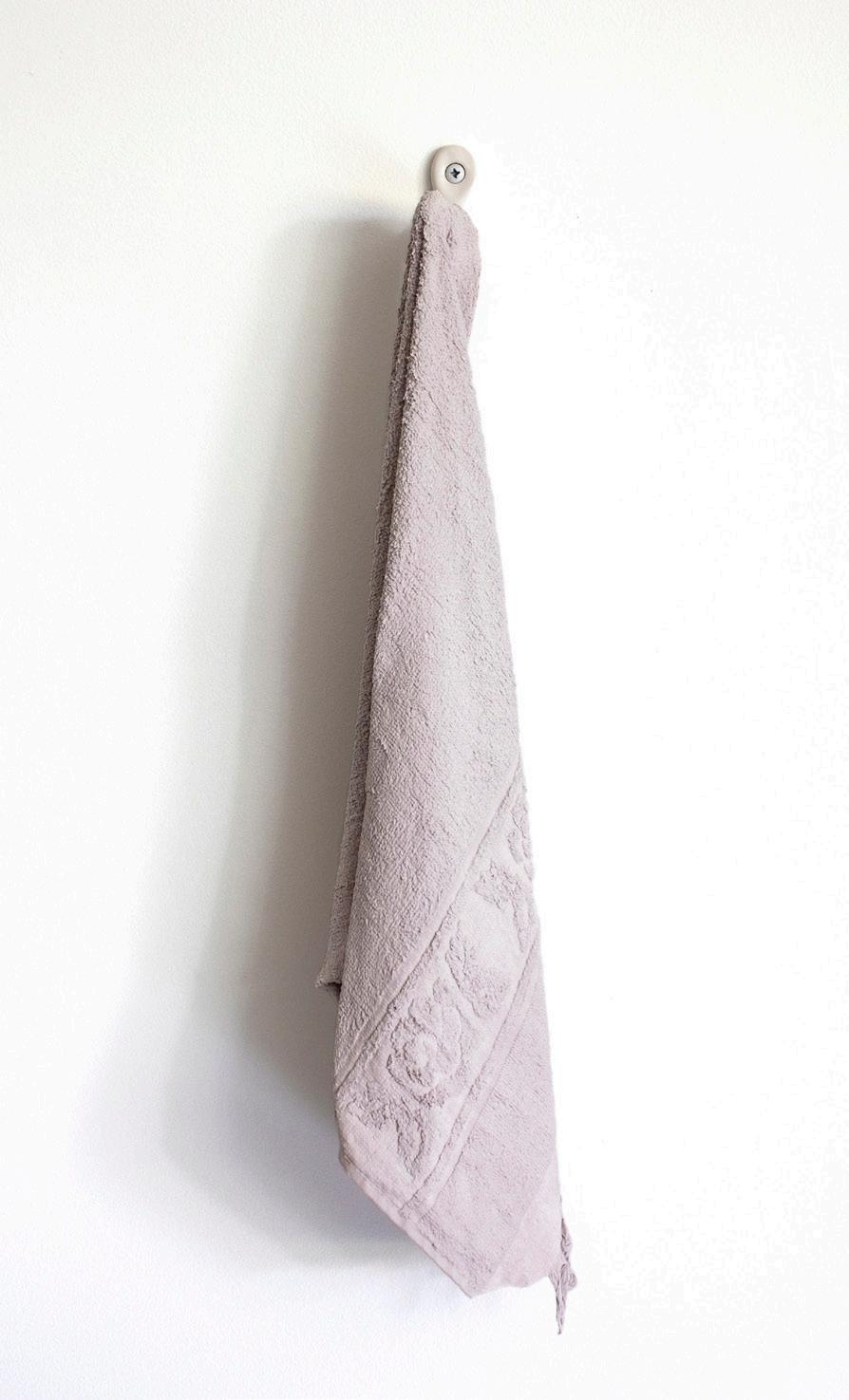
rag
slip-dipped tinted porcelain burnout on glazed ceramic hook
grandpa's ww2 army shovel set in hoe mode
hand-built ceramic with tinted porcelain and underglaze surfacing 22 x 6 x 10 in
